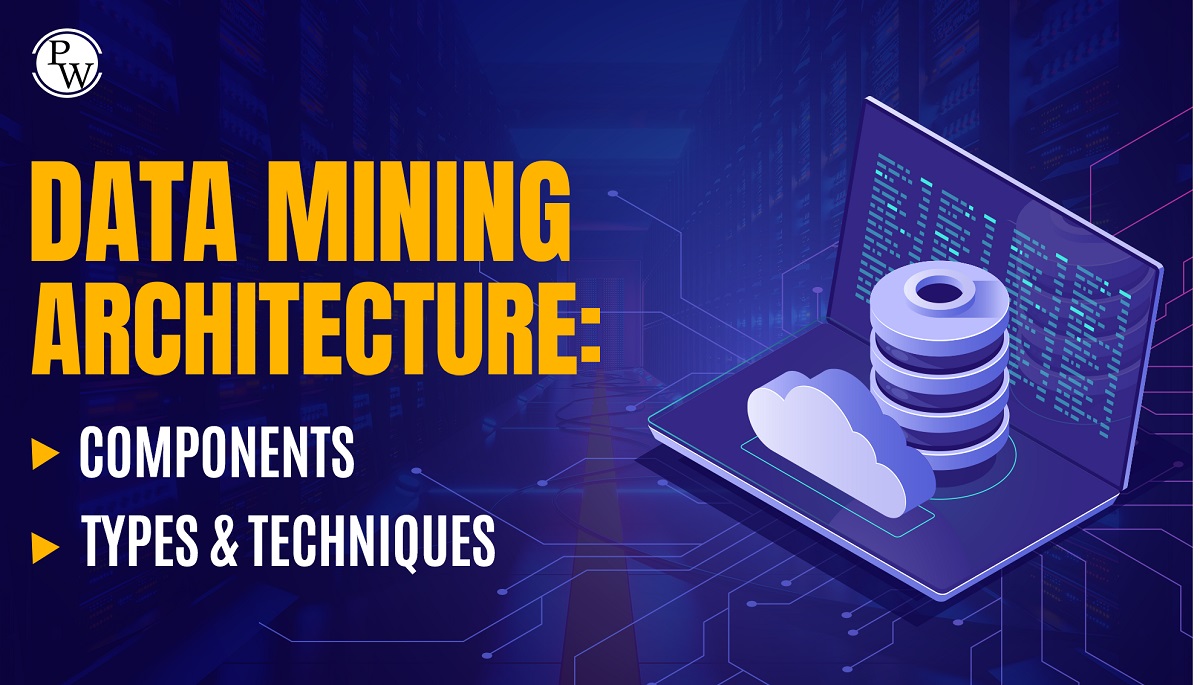Data mining architecture refers to a system designed for memory-based data mining, a process that involves extracting valuable knowledge from large volumes of data. This data is usually stored in various sources like file systems, databases, and data warehouses. The knowledge obtained from data mining has proven to be highly beneficial for both businesses and individuals.
Data mining tools enable us to discover relationships, patterns, and valuable insights from massive databases, helping us make informed decisions for future activities. Many domains have embraced this technique to analyze their data efficiently.
When applying data mining techniques to vast and geographically dispersed datasets, there are certain challenges. Issues such as data size and distribution across multiple sites must be addressed.
This paper presents a system architecture that addresses these challenges, making it scalable, portable, and capable of effectively handling distributed data mining applications. By utilizing this architecture, organizations can harness the power of data mining to gain valuable insights from their vast datasets and optimize their decision-making processes.
Also Read Technical Topics
Data Mining Components
Data mining involves several key components, each playing a crucial role in the process:
Databases are data repositories like data warehouses, spreadsheets, and other sources where data cleaning and integration techniques are applied. They provide the foundation for data mining.
- Data Warehouse Server: This component retrieves relevant records from a data warehouse based on users’ requests. It acts as a gateway to the necessary data for analysis.
- Knowledge Base: A knowledge domain utilized for discovering interesting patterns in the data. This serves as a reference to identify valuable insights.
- Data Mining Engine: This functional module is the heart of data mining. It performs various tasks such as classification, association, and cluster analysis, extracting meaningful information from the data.
- Pattern Evaluation Module: This component uses interestingness measures to narrow the search and focus on meaningful patterns. It helps in identifying the most relevant and useful insights.
- User Interface: The graphical user interface allows users to interact with the system effectively. Users can describe a data mining function or query through this interface, making the process user-friendly and intuitive.
By understanding these major components of data mining, businesses, and individuals can harness the power of data to uncover valuable patterns and insights, guiding them in making informed decisions and improving their operations.
Recommended Technical Course
- MERN Full Stack Development Course
- Generative AI Course
- System Design Workshop
- Java+DSA 1.0 Course
- Full Stack Web Dev 1.0 Course
- Data Science with ML 1.0 Course
Types of Data Mining Architectures
There are four types of data mining architectures based on the level of coupling between the data mining system and the data sources:
- No Coupling: This architecture retrieves data directly from specific data sources, bypassing a database. While it may not be the most efficient approach, it is used for simple data mining tasks.
- Loose Coupling: In this architecture, the data mining system takes data from a database and stores it within the system’s memory. This approach is known as memory-based data mining.
- Semi-Tight Coupling: The semi-tight coupling architecture takes advantage of the features offered by data warehouse systems, such as sorting, indexing, and aggregation. It may also store intermediate results in the database to enhance performance.
- Tight Coupling: In the tight coupling architecture, the data warehouse is a critical component for data mining tasks. This architecture offers scalability, improved performance, and integrated information.
Each type of data mining architecture has its strengths and weaknesses, and the choice of the right architecture depends on the complexity and specific requirements of the data mining tasks. By understanding these different approaches, organizations can make informed decisions about the most appropriate architecture for their data mining needs, optimizing their data analysis processes and gaining valuable insights.
Techniques of Data Mining Architecture
Given below are the popular data mining architecture techniques that can help Data mining architecture work efficiently:
- Decision Trees: Decision trees are a widely used data mining technique because of their simplicity. They act like a flowchart, where each node represents a condition, and each answer leads to specific data that helps us make a final decision.
- Sequential Patterns: This technique is employed to discover regular events and similar patterns in transaction data. We can identify past transactions and patterns by analyzing historical customer data.
- Clustering: Clustering involves grouping objects with similar characteristics using an automatic method. We use clustering to define classes and place suitable objects into each class.
- Prediction: The prediction method helps establish relationships between independent and dependent instances in the data.
- Association: Also known as the relation technique, the association recognizes patterns based on item relationships in single transactions. It’s useful for market basket analysis, helping us explore products that customers frequently demand together.
- Classification: Classification is a machine learning-based technique that assigns each item in a set to predefined groups. It employs various mathematical techniques like neural networks, linear programming, and decision trees to make these classifications.
By understanding these data mining techniques, businesses and individuals can leverage the power of data to gain valuable insights, make informed decisions, and optimize their processes for better outcomes.
PW Skills Provide Various Platform
FAQs
What are the data mining architecture's components?
Data Mining Architecture Javatpoint Data sources, data mining engine, data warehouse server, the pattern evaluation module, graphical user interface, and knowledge base are the main components of a data mining system.
What kind of data mining methods do you use?
The types of data extraction techniques shall include:
- Clustering.
- Prediction.
- Classification.
- Genetic Algorithms.
- Regression.
- Association rule learning.
What are the 4 most common methods of data mining?
To help you achieve optimal results, the following 5 techniques for data mining may be helpful :
- Classification Analysis
- Association rule learning
- The detection of anomalies or outliers
- Clustering Analysis
- Regression Analysis
What are the elements of data mining, and how do they work?
The term "data mining" refers to the idea of gathering information from databases by means of high-speed computers. It's a broad term that applies to many different types of analysis. Data mining refers to the process of discovering valid, novel, advantageous, and finally comprehensible patterns in data.
What is the architecture of data mining?
The Data Mining System uses a database to retrieve data within this architecture. The system retrieves data from a database in loose coupling data mining architecture. And the result is stored in these systems. The data mining architecture is based on a memory-based data mining system.







